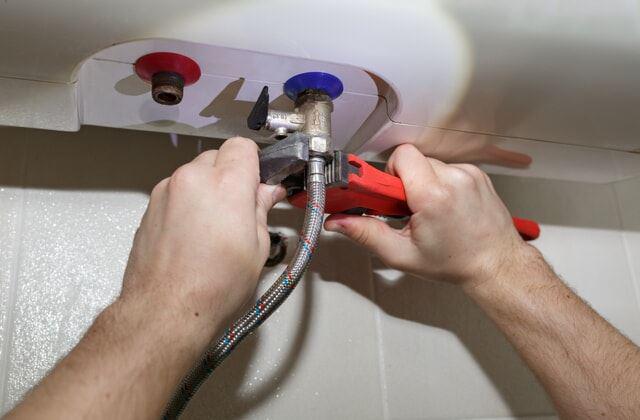Best Methods to Care for Your Home's Hot Water System Successfully
Best Methods to Care for Your Home's Hot Water System Successfully
Blog Article
Do you find yourself on the lookout for facts on What Kind of Maintenance Do Water Heaters Need??

Hot water is crucial for day-to-day comfort, whether it's for a revitalizing shower or cleaning dishes. To guarantee your warm water system runs efficiently and lasts much longer, regular upkeep is key. This short article provides useful tips and understandings on exactly how to keep your home's warm water system to avoid interruptions and pricey repair work.
Intro
Keeping your home's hot water system may appear difficult, but with a couple of straightforward steps, you can ensure it runs efficiently for years to find. This overview covers everything from comprehending your warm water system to do it yourself upkeep tips and knowing when to employ expert aid.
Importance of Maintaining Your Warm Water System
Routine maintenance not just extends the lifespan of your hot water system however additionally guarantees it runs efficiently. Overlooking maintenance can bring about decreased efficiency, greater power costs, and even early failure of the system.
Indicators Your Warm Water System Needs Upkeep
Knowing when your hot water system needs focus can stop major concerns. Keep an eye out for indications such as inconsistent water temperature, unusual noises from the heating unit, or rusty water.
Flushing the Water Heater
Flushing your water heater eliminates sediment buildup, improving efficiency and lengthening its life.
Monitoring and Replacing Anode Rods
Anode rods protect against corrosion inside the tank. Inspecting and replacing them when broken is crucial.
Facility Problems Requiring Professional Assistance
Instances consist of significant leakages, electric troubles, or if your hot water heater is consistently underperforming.
Routine Specialist Upkeep Conveniences
Professional maintenance can include thorough inspections, tune-ups, and ensuring compliance with security requirements.
Checking and Readjusting Temperature Level Setups
Changing the temperature level setups guarantees optimal efficiency and security.
DIY Tips for Upkeep
You can execute a number of maintenance jobs yourself to maintain your hot water system in top problem.
Looking for Leaks
Consistently check pipes and links for leaks, as these can bring about water damage and higher costs.
Comprehending Your Warm Water System
Before diving right into maintenance jobs, it's valuable to understand the standard elements of your warm water system. Usually, this includes the water heater itself, pipelines, anode rods, and temperature level controls.
Regular Monthly Maintenance Tasks
Routine month-to-month checks can assist capture minor concerns before they rise.
Evaluating Stress Relief Valves
Checking the stress relief valve ensures it operates appropriately and avoids too much pressure accumulation.
Shielding Pipes
Protecting warm water pipelines reduces warm loss and can conserve energy.
When to Call an Expert
While do it yourself upkeep is beneficial, some concerns require specialist competence.
Conclusion
Routine upkeep of your home's hot water system is vital for performance, longevity, and cost financial savings. By adhering to these suggestions and recognizing when to look for professional help, you can guarantee a dependable supply of hot water without unexpected interruptions.
Water Heater Maintenance Tips
Test the TPR Valve
Shut off the power and the cold-water supply valve. Place a bucket under the pipe connected to the temperature-pressure-release (TPR) valve on the top or side of the tank. (This valve opens if the tank pressure gets too high.) Lift the valve’s tab to let some water out, then let go. If water keeps flowing, drain the tank partway, unscrew the old valve with a pipe wrench, and install a new one. Check the Anode Rod
Put a hose to the tank’s drain cock and let out a few gallons of water. Now fit a 1 1/16-inch socket onto the rod’s hex head on top of the heater (or under its top plate) and unscrew the rod. If it’s less than ½ inch thick or coated with calcium, buy a new one, wrap its threads with Teflon tape, put it back in the tank, and tighten securely. Use this segmented rod if headroom above the tank is limited. Drain the Tank and Wash Out Sediment
Drain the remaining water in the tank into the bucket, then stir up the sediment on the tank’s bottom by briefly opening the cold-water supply valve. Drain and repeat until clean water comes out of the hose. Close the drain cock, refill the tank, and turn its power back on. Adjust the Temperature
Find the temperature dial on the side of the tank and unscrew its cover. Adjust the dial to 120 degrees using a flathead screwdriver. For every 10 degrees the temperature is lowered, you can expect to save up to 5 percent in energy costs. Turn the water heater off or the thermostat down to its lowest setting if you plan to be away from home for more than three days. Insulate the Pipes
Buy some self-sticking 3/8-inch-thick foam pipe insulation that matches the pipes’ diameter. Slide the foam over the hot-and cold-water pipes as far as you can reach. Insulating the cold-water pipe prevents condensation in summer. Peel the tape and squeeze the insulation closed. If the pipe is 6 inches or less from the flue, cover it with 1-inch-thick unfaced fiberglass pipe wrap. https://www.thisoldhouse.com/plumbing/21016402/how-to-maintain-a-water-heater

I found that blog entry on How to Maintain Your Water Heater & Prolong its Life when perusing the internet. In case you appreciated our blog entry kindly don't forget to share it. I thank you for your readership.
Call Today Report this page